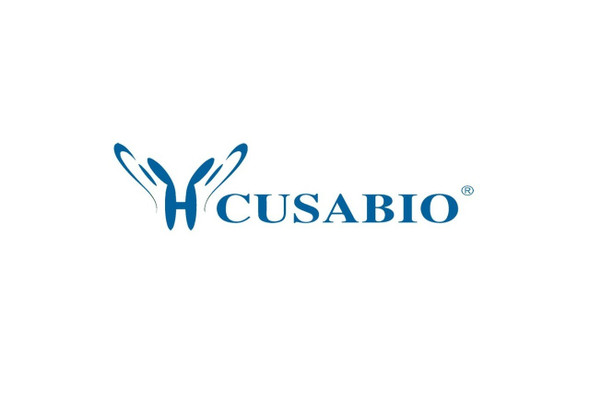Cusabio Virus & Bacteria Recombinants
Recombinant Herpes simplex virus type 2 ICP47 protein (US12) | CSB-EP353051HGH
- SKU:
- CSB-EP353051HGH
- Availability:
- 13 - 23 Working Days
Description
Recombinant Herpes simplex virus type 2 ICP47 protein (US12) | CSB-EP353051HGH | Cusabio
Alternative Name(s): Immediate-early protein IE12 (Immediate-early-5) (Infected cell protein 47) (US12 protein) (Vmw12)
Gene Names: US12
Research Areas: Others
Organism: Herpes simplex virus type 2 (strain SA8) (Simian agent 8)
AA Sequence: MSSLYLATVDAFLRNPHTRHRTCADLRRELDAYADEERREAAKAIAHPDRPLLAPPSAPPNHSHLAARETAPPPAATP
Source: E.coli
Tag Info: N-terminal 6xHis-KSI-tagged
Expression Region: 1-78aa
Sequence Info: Full Length
MW: 23.9 kDa
Purity: Greater than 85% as determined by SDS-PAGE.
Relevance: Plays a role in the inhibition of host immune response. Binds specifically to transporters associated with antigen processing, thereby blocking peptide-binding and translocation by TAP as well as subsequent loading of peptides onto MHC class I molecules. Empty MHC I molecules are retained in the endoplasmic reticulum and ultimately directed to proteasomal degradation. In consequence, infected cells are masked for immune recognition by cytotoxic T-lymphocytes.
Reference: "Identification of an ICP47 homolog in Simian agent 8 (SA8)." Bigger J.E., Martin D.W. Submitted (SEP-2003) to the EMBL/GenBank/DDBJ databases Cited for: NUCLEOTIDE SEQUENCE [GENOMIC DNA].
Storage: The shelf life is related to many factors, storage state, buffer ingredients, storage temperature and the stability of the protein itself. Generally, the shelf life of liquid form is 6 months at -20?/-80?. The shelf life of lyophilized form is 12 months at -20?/-80?.
Notes: Repeated freezing and thawing is not recommended. Store working aliquots at 4? for up to one week.
Function: Plays a role in the inhibition of host immune response. Binds specifically to transporters associated with antigen processing (TAP), thereby blocking peptide-binding and translocation by TAP as well as subsequent loading of peptides onto MHC class I molecules. Empty MHC I molecules are retained in the endoplasmic reticulum and ultimately directed to proteasomal degradation. In consequence, infected cells are masked for immune recognition by cytotoxic T-lymphocytes.
Involvement in disease:
Subcellular Location: Host cytoplasm, Host nucleus
Protein Families: Herpesviridae US12 family
Tissue Specificity:
Paythway:
Form: Liquid or Lyophilized powder
Buffer: If the delivery form is liquid, the default storage buffer is Tris/PBS-based buffer, 5%-50% glycerol. If the delivery form is lyophilized powder, the buffer before lyophilization is Tris/PBS-based buffer, 6% Trehalose, pH 8.0.
Reconstitution: We recommend that this vial be briefly centrifuged prior to opening to bring the contents to the bottom. Please reconstitute protein in deionized sterile water to a concentration of 0.1-1.0 mg/mL.We recommend to add 5-50% of glycerol (final concentration) and aliquot for long-term storage at -20?/-80?. Our default final concentration of glycerol is 50%. Customers could use it as reference.
Uniprot ID: P60504
HGNC Database Link: N/A
UniGene Database Link: N/A
KEGG Database Link: N/A
STRING Database Link: N/A
OMIM Database Link: N/A












